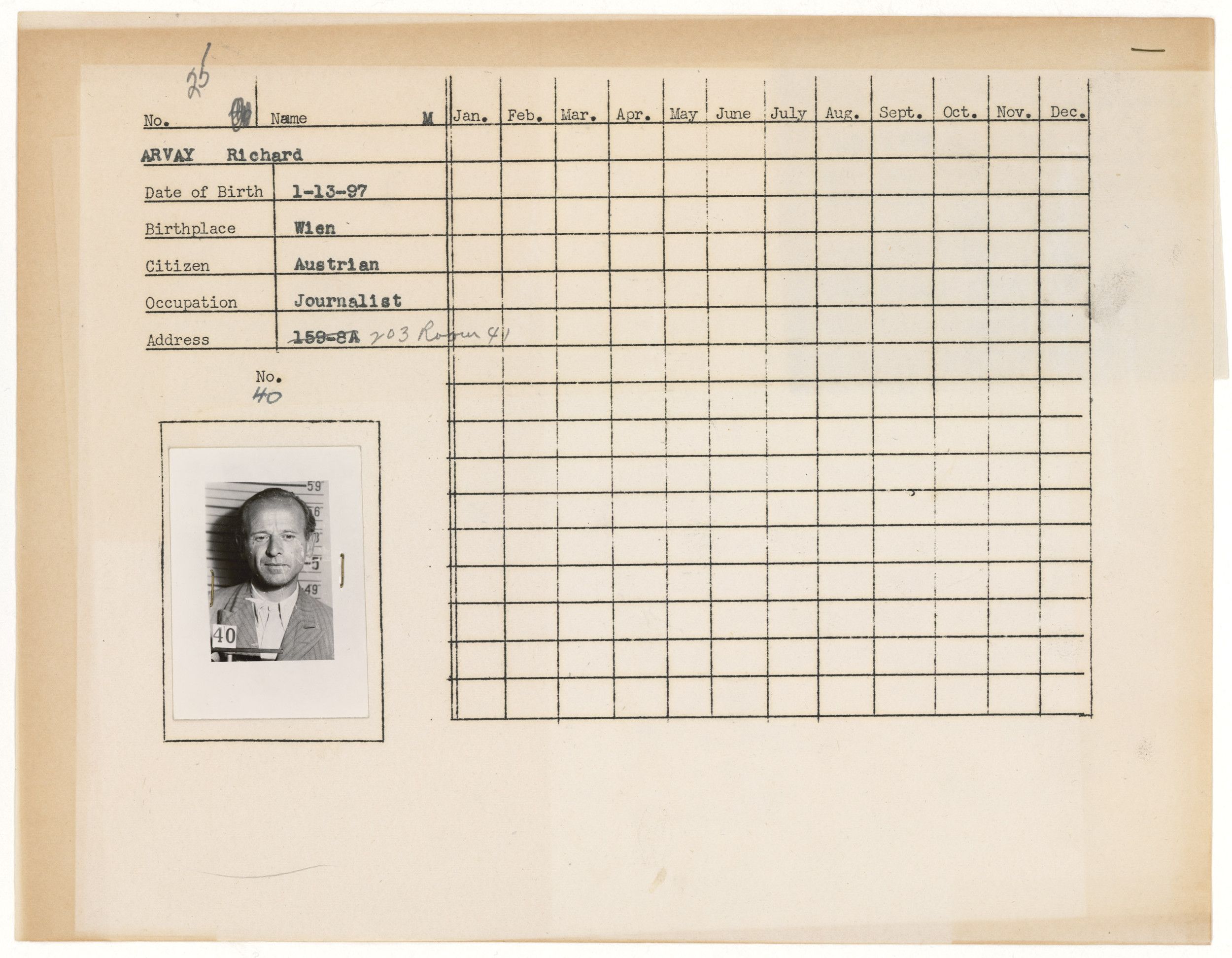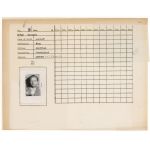Richard Arvay's Identification Form
7/1944
Add to Favorites:
Add all page(s) of this document to activity:

Add only page 1 to activity:
Add only page 2 to activity:
After the Nazis came to power in Germany in 1933, German and Austrian Jews tried in growing numbers to flee persecution. While about 250,000 would eventually come to the U.S. between 1933 and 1945, immigration officials applied regulations so rigidly, especially after the outbreak of World War II in 1939, that quotas for Germany and Austria were rarely filled.
Richard Arvay was one of the few European Jews who escaped the Holocaust and came to the United States during the war. An Austrian writer and filmmaker in the late 1920s and early 1930s, Arvay suffered persecution by the Nazis. He fled to Paris when Germany annexed Austria in 1938. After Germany occupied France in 1940, Arvay was sent to a concentration camp for a year. He escaped to Italy in 1943, when he was threatened with deportation to Poland.
In 1944, he was one of about 1,000 refugees picked to come to America to live in the newly established Fort Ontario Emergency Refugee Shelter in Oswego, New York. President Roosevelt had established the camp to respond to political pressures to do more to help Jews in Europe and to sidestep immigration regulations. Initially, refugees had to promise to return to Europe when the war was over, but President Truman permitted them to stay.
Richard Arvay lived at Fort Ontario for about 18 months. On a form stating that he did not want to return to Europe, he added a handwritten explanation: “I would also find it impossible to live in a country where all my family have been killed.” He brought his wife to America, settled in New York City, and worked as a writer. In 1951 he became a U.S. citizen. He died in 1970.
Richard Arvay was one of the few European Jews who escaped the Holocaust and came to the United States during the war. An Austrian writer and filmmaker in the late 1920s and early 1930s, Arvay suffered persecution by the Nazis. He fled to Paris when Germany annexed Austria in 1938. After Germany occupied France in 1940, Arvay was sent to a concentration camp for a year. He escaped to Italy in 1943, when he was threatened with deportation to Poland.
In 1944, he was one of about 1,000 refugees picked to come to America to live in the newly established Fort Ontario Emergency Refugee Shelter in Oswego, New York. President Roosevelt had established the camp to respond to political pressures to do more to help Jews in Europe and to sidestep immigration regulations. Initially, refugees had to promise to return to Europe when the war was over, but President Truman permitted them to stay.
Richard Arvay lived at Fort Ontario for about 18 months. On a form stating that he did not want to return to Europe, he added a handwritten explanation: “I would also find it impossible to live in a country where all my family have been killed.” He brought his wife to America, settled in New York City, and worked as a writer. In 1951 he became a U.S. citizen. He died in 1970.
This primary source comes from the Records of the War Relocation Authority.
National Archives Identifier: 1548872
Full Citation: Identification form with photograph of Richard Arvay from the Fort Ontario Emergency Refugee Shelter; 7/1944; Refugee Case Files, 1944 - 1946; Records of the War Relocation Authority, Record Group 210; National Archives Building, Washington, DC. [Online Version, https://docsteach.org/documents/document/arvay-id-form, April 18, 2024]Activities that use this document
- Immigration to America: Stories and Travels
Created by the National Archives Education Team
Rights: Public Domain, Free of Known Copyright Restrictions. Learn more on our privacy and legal page.





